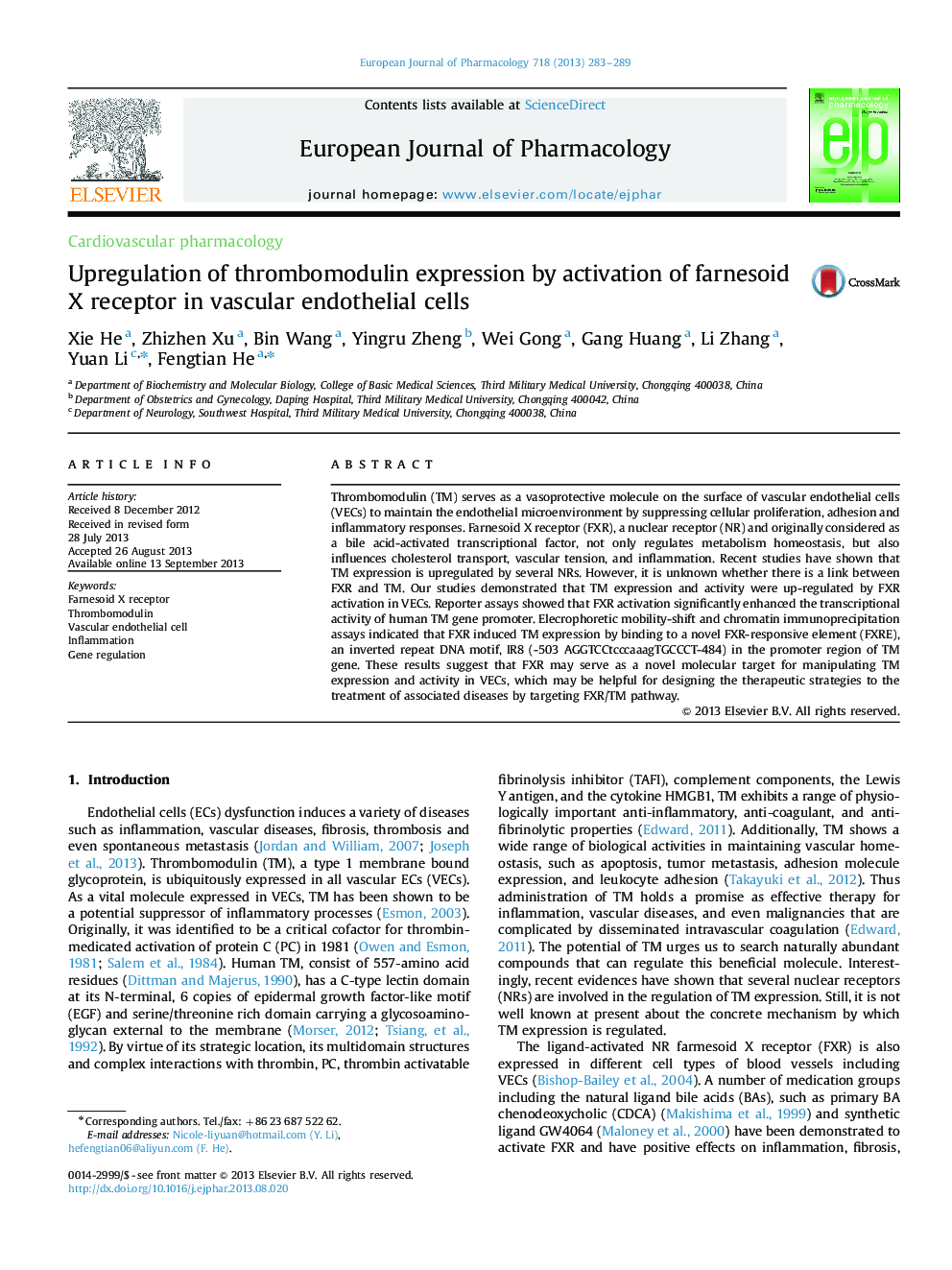| Article ID | Journal | Published Year | Pages | File Type |
|---|---|---|---|---|
| 5828416 | European Journal of Pharmacology | 2013 | 7 Pages |
Abstract
Thrombomodulin (TM) serves as a vasoprotective molecule on the surface of vascular endothelial cells (VECs) to maintain the endothelial microenvironment by suppressing cellular proliferation, adhesion and inflammatory responses. Farnesoid X receptor (FXR), a nuclear receptor (NR) and originally considered as a bile acid-activated transcriptional factor, not only regulates metabolism homeostasis, but also influences cholesterol transport, vascular tension, and inflammation. Recent studies have shown that TM expression is upregulated by several NRs. However, it is unknown whether there is a link between FXR and TM. Our studies demonstrated that TM expression and activity were up-regulated by FXR activation in VECs. Reporter assays showed that FXR activation significantly enhanced the transcriptional activity of human TM gene promoter. Elecrophoretic mobility-shift and chromatin immunoprecipitation assays indicated that FXR induced TM expression by binding to a novel FXR-responsive element (FXRE), an inverted repeat DNA motif, IR8 (-503 AGGTCCtcccaaagTGCCCT-484) in the promoter region of TM gene. These results suggest that FXR may serve as a novel molecular target for manipulating TM expression and activity in VECs, which may be helpful for designing the therapeutic strategies to the treatment of associated diseases by targeting FXR/TM pathway.
Related Topics
Life Sciences
Neuroscience
Cellular and Molecular Neuroscience
Authors
Xie He, Zhizhen Xu, Bin Wang, Yingru Zheng, Wei Gong, Gang Huang, Li Zhang, Yuan Li, Fengtian He,
